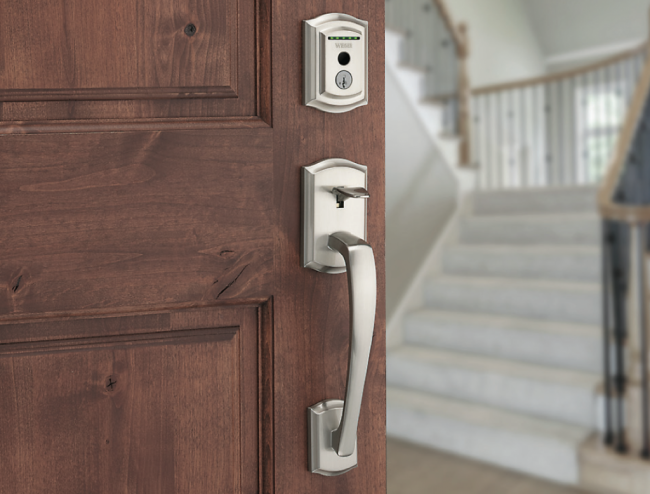
What’s next in the Smart Home Industry?
Features Locks and Home Security Products Locks and Home Security editor pick IoT technology Parks Associates

Today, smart homes equipped with IoT technology, are quickly increasing in popularity due to the convenience, comfort and security it brings. Parks Associates, an internationally recognized market research company specializing in smart home technology found that 29 per cent of US broadband households report owning at least one smart home device.
The firm’s research shows that 20 per cent of Canadian broadband households own any remotely-monitored internet-connected device and 14 per cent report own at least one smart home device.
New types of smart home products are emerging from startups and traditional brands as companies seek to address more problems in the home using smart devices. Several factors within the smart home industry negatively affect market growth including low awareness, the perception that products are too expensive and do not offer strong value, and security and privacy concerns.
Purchase intentions continue to grow though – one-third of Canadian broadband households plan to purchase a smart home device in the next 12 months.
World-renowned technology companies like Amazon, Google, and Blue by ADT have developed unique smart home solutions to increase adoption and gain a foothold in this growing competitive market.
Cameras and video analytics
The smart home starts at the front door with devices like smart cameras and smart video doorbells. Parks Associates found that between 2018 and 2019, smart camera adoption increased from 10 per cent to 12 per cent of US broadband households and video doorbell adoption increased from 8 per cent – 10 per cent over the same period. Several companies including Swann, Xcentz, and Reolink launched new cameras and Eufy, Swann, Adobe and Blue by ADT announced products that will be released later this year.
The new cameras boast high resolution, wide-angle viewing and A.I capabilities for facial recognition. A number of smart cameras have entered the market at relatively low price points which are lowering the purchase barriers.
Connected bathrooms
Bathroom products such as smart shower heads, baths, mirrors, and toilets are among the next wave of smart home products. Shine developed a bathroom assistant robot that automates toilet cleaning and maintenance. Pani has launched a water monitor that detects water consumption and leaks from water sources in the bathroom and offers users recommendations on how to save water.
A new toothbrush was released by Oral B with AI that helps improve brushing quality. These new technologies are not only going to be beneficial for homeowners, but also insurers as they are environmentally friendly and will prevent any severe property damages.
Product integration across brands
Amazon, Apple, Google, and Zigbee are partnering to develop smart home standards in the new Alliance, Project Connected Home over IP. The development of standards further these companies’ objectives of having a broad range of devices that will work with their respective smart home platforms.
The majority of consumers report that having their devices work with voice assistants is an important purchase consideration. Amazon announced that Alexa can now run on devices with 1MB of memory and a Cortex-M processor which lowers the cost to build Alexa-powered devices.
This will ultimately drive more device manufacturers to integrate Alexa in their products. For example, users may command the assistant to delete what they just said or delete everything they said the past three days. Bloomberg has reported that Apple is exploring strategies that make it easier for third-party device manufacturers to integrate with HomeKit, in an effort to build out its ecosystem of compatible devices.
Innovative products
Gimdow has released a “peel and stick” smart lock. It works by pasting the smart lock over an existing door lock, allowing the original lock to be controlled remotely. The company claims that the product works with virtually all American- and European-made smart locks.
This product opens up smart door locks to customers who are intimidated by the installation process of traditional smart locks and to renters who are often not allowed to make the permanent changes involved in traditional smart door lock installation.
Invisible smart lock solutions are also emerging. Level Lock has introduced a smart lock that is installed inside the door and transforms the existing deadbolt into a smart lock. These invisible smart door locks are designed to blend with existing home decor and will be appealing to customers who have concerns about smart product aesthetics.
Smart home technologies solve real-world problems and drive convenience for consumers. Product categories that were most active by the end of 2019 were smart cameras, smart door locks, smart video doorbells, and smart light bulbs.
Each of these product categories have experienced new product launches and product updates. Product categories with highest purchase intentions among broadband households are smart video doorbells, smoke/CO detectors, light bulbs, and thermostats.
Consumers should be able to trust these new technologies and the companies behind them, enjoy easy access to support services, perceive practical and cost-savings benefits, and be offered affordable business models that minimize their risk. Smart home technology has infinite potential and almost every aspect of a house can be enhanced with cutting edge solutions.